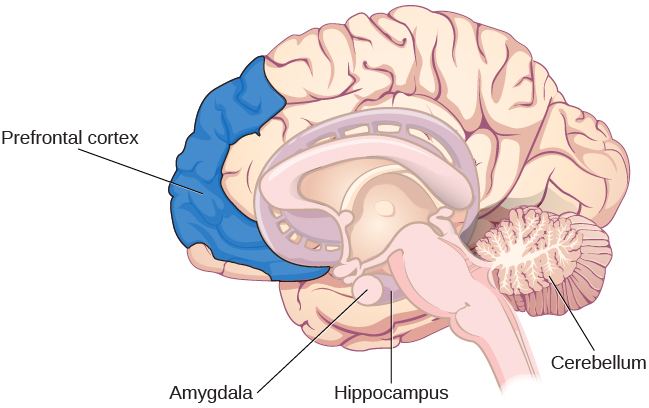| << Chapter < Page | Chapter >> Page > |
Are memories stored in just one part of the brain, or are they stored in many different parts of the brain? Karl Lashley began exploring this problem, about 100 years ago, by making lesions in the brains of animals such as rats and monkeys. He was searching for evidence of the engram : the group of neurons that serve as the “physical representation of memory” (Josselyn, 2010). First, Lashley (1950) trained rats to find their way through a maze. Then, he used the tools available at the time—in this case a soldering iron—to create lesions in the rats’ brains, specifically in the cerebral cortex. He did this because he was trying to erase the engram, or the original memory trace that the rats had of the maze.
Lashley did not find evidence of the engram, and the rats were still able to find their way through the maze, regardless of the size or location of the lesion. Based on his creation of lesions and the animals’ reaction, he formulated the equipotentiality hypothesis : if part of one area of the brain involved in memory is damaged, another part of the same area can take over that memory function (Lashley, 1950). Although Lashley’s early work did not confirm the existence of the engram, modern psychologists are making progress locating it. Eric Kandel, for example, spent decades working on the synapse, the basic structure of the brain, and its role in controlling the flow of information through neural circuits needed to store memories (Mayford, Siegelbaum,&Kandel, 2012).
Many scientists believe that the entire brain is involved with memory. However, since Lashley’s research, other scientists have been able to look more closely at the brain and memory. They have argued that memory is located in specific parts of the brain, and specific neurons can be recognized for their involvement in forming memories. The main parts of the brain involved with memory are the amygdala, the hippocampus, the cerebellum, and the prefrontal cortex ( [link] ).

First, let’s look at the role of the amygdala in memory formation. The main job of the amygdala is to regulate emotions, such as fear and aggression ( [link] ). The amygdala plays a part in how memories are stored because storage is influenced by stress hormones. For example, one researcher experimented with rats and the fear response (Josselyn, 2010). Using Pavlovian conditioning, a neutral tone was paired with a foot shock to the rats. This produced a fear memory in the rats. After being conditioned, each time they heard the tone, they would freeze (a defense response in rats), indicating a memory for the impending shock. Then the researchers induced cell death in neurons in the lateral amygdala, which is the specific area of the brain responsible for fear memories. They found the fear memory faded (became extinct). Because of its role in processing emotional information, the amygdala is also involved in memory consolidation: the process of transferring new learning into long-term memory. The amygdala seems to facilitate encoding memories at a deeper level when the event is emotionally arousing.

Notification Switch
Would you like to follow the 'Chapter 8: memory sw' conversation and receive update notifications?